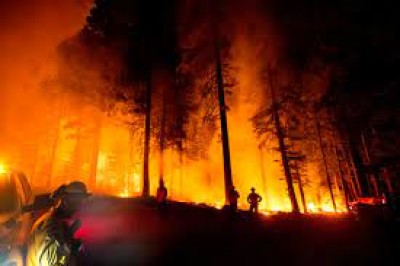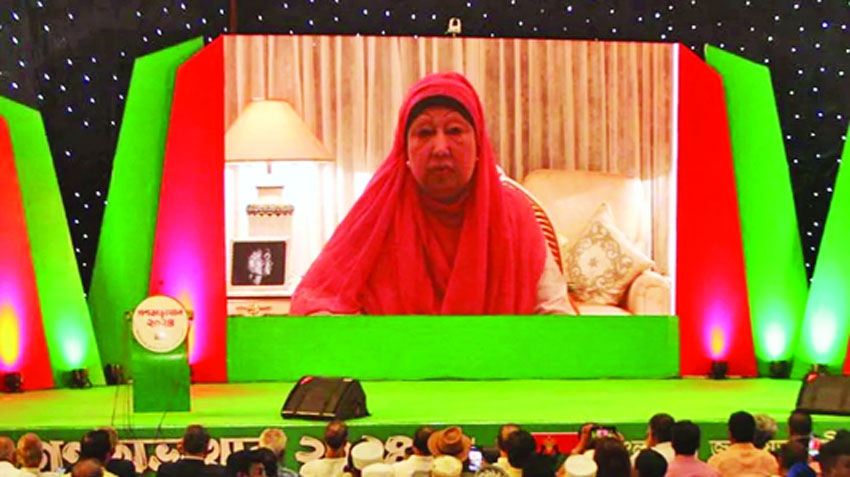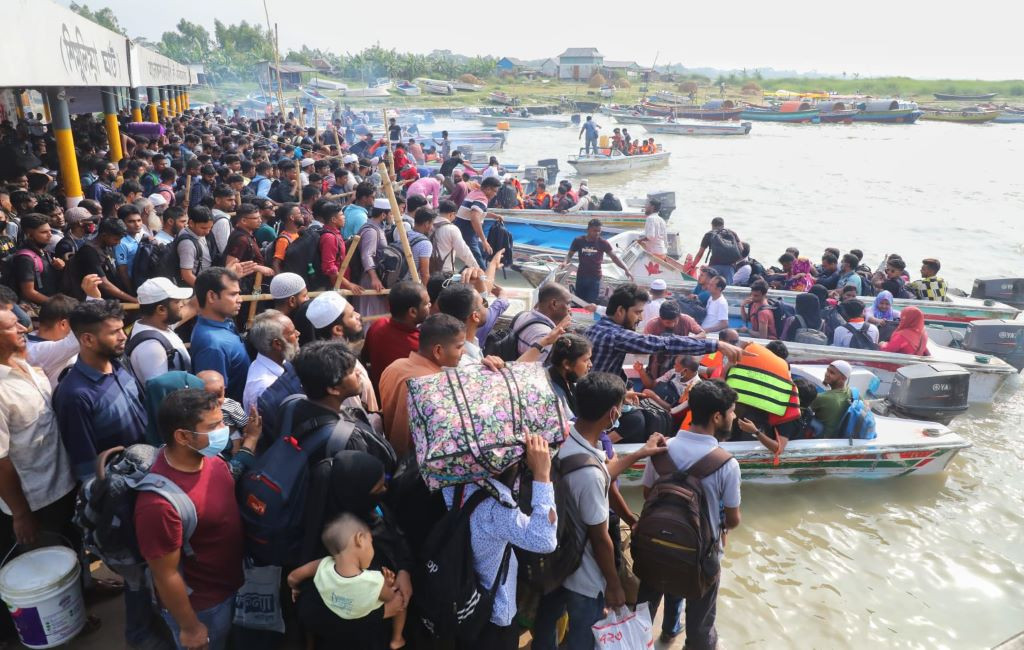- 2021-08-02 01:21:52
- LAST MODIFIED: 2025-12-06 22:35:53
Evacuations lifted as progress made against western fires

Photo: Collected
International Desk: Dhaka, Aug-02,
Firefighters in Oregon
reported good progress in the battle against the nation’s largest wildfire,
while authorities canceled evacuation orders near a major blaze in Northern
California.
Containment of the
Bootleg Fire in remote southern Oregon was up to 74% on Sunday. It was 56%
contained a day earlier.
“That reflects several
good days of work on the ground where crews have been able to reinforce and
build additional containment lines,” fire spokesman Al Nash said Sunday.
The blaze has scorched
over 646 square miles (1,673 square kilometers) since being sparked by
lightning July 6 in the Fremont-Winema National Forest.
California’s Dixie Fire
covered nearly 383 square miles (992 square kilometers) in mountains where 42
homes and other buildings have been destroyed.
The fire was 32%
contained Sunday, and evacuation orders and warnings were lifted for several
areas of Butte and Plumas counties.
The cause of the blaze,
which ignited July 13, was still under investigation.
Authorities warned that
with unpredictable winds and extremely dry fuels, the risk of flare-ups
remained high.
In recent days,
lightning sparked two wildfires that threatened remote homes in the
Shasta-Trinity National Forest. Evacuation warnings remained in place Sunday
for communities along the Trinity River.
In Montana, a
wind-driven wildfire destroyed more than a dozen homes, outbuildings and other
structures, authorities said Sunday. Evacuations were ordered after flames
jumped a highway and moved toward communities near Flathead Lake in the
northwestern part of the state.
Crews also battled
major blazes in northeast Washington and northern Idaho.
Nearly 22,000
firefighters and support personnel were battling 91 large, active wildfires
covering 2,813 square miles (7,285 square kilometers) in mostly western states,
the National Interagency Fire Center said.
A historic drought and
recent heat waves tied to climate change have made wildfires harder to fight in
the American West. Scientists say climate change has made the region much
warmer and drier in the past 30 years and will continue to make weather more
extreme and wildfires more frequent and destructive.
The U.S. Drought
Monitor reported last week that while a robust monsoon has delivered
drought-easing rainfall to the Southwest, critically dry conditions persist
across Northern California and the Northwest, where there has been an expansion
of “exceptional drought,” the worst category.
Dry conditions and
powerful winds made for dangerous fire conditions in Hawaii. A wind advisory
was issued Sunday for portions of Lanai, Maui and the Big Island.
A fast-moving wildfire
on Hawaii’s Big Island grew to 62.5 square miles (100.58 square kilometers),
prompting evacuation orders.
The wildfire prompted
officials to ask about 2,500 residents living in Waikoloa Village to evacuate
Sunday, a day after people living in two other communities were asked to
evacuate.
“This isn’t the time to
panic,” Fire Chief Kazuo Todd said during a televised briefing.
About 50 fire apparatus
are being employed to fight the fire, and the National Guard has been called in
to help, he said.
“Due to the high wind
and weather patterns that are going on through the area, the fire is continuing
to break through our fire breaks,” Todd said.
Local media report at
least one home has been destroyed. An evacuation center was being set up at the
old Kona airport.
End/Dct/Sma/










